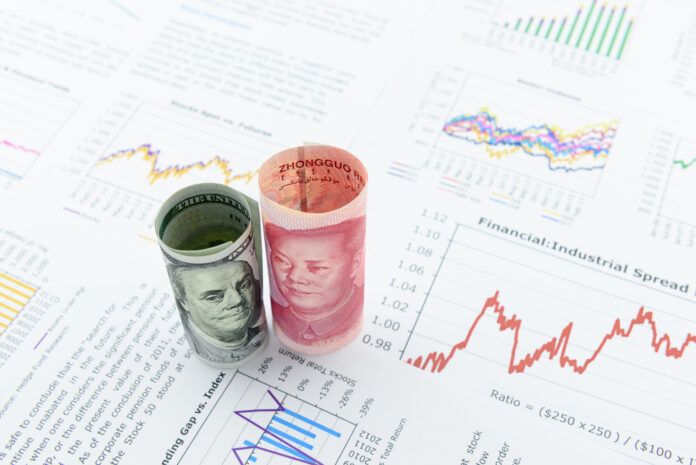The U.S. dollar surged on Monday after the White House announced a breakthrough trade agreement with China over the weekend, reviving optimism that the world’s largest economy could sidestep a prolonged and damaging trade war.
As of 03:30 ET (08:30 GMT), the U.S. Dollar Index—measuring the greenback against six major currencies—jumped 1.3% to 101.455, its highest level in a month. Despite the surge, the index remains down over 3% from the April 2 declaration of Trump’s so-called “Liberation Day.”
Details of the Trade Deal Emerge
Following intense negotiations in Geneva, U.S. and Chinese officials reached a deal that includes a 90-day pause on further tariff escalations. Washington agreed to cut tariffs on Chinese goods to 30%, while Beijing reduced duties on U.S. imports to 10%, according to a rare joint statement from both governments.
Prior to the deal, President Trump had hiked tariffs on Chinese imports to as high as 145%, prompting retaliatory measures from Beijing, including 125% tariffs on U.S. goods. Additional rounds of trade talks and working-level consultations are expected to continue.
Analysts at ING noted, “We’ve argued that the dollar needs a steady stream of positive trade news to sustain its recovery. The Trump administration has delivered just that. While gains haven’t matched the rally in equities, Trump’s more pragmatic tone on trade has reduced downside risks for the dollar.”
CPI Data in Focus as Rate Speculation Builds
Investors are now looking to Tuesday’s U.S. Consumer Price Index (CPI) report for insights into how the trade dispute has impacted inflation—and what it could mean for Federal Reserve policy. Markets are currently pricing in just a 17% chance of a rate cut in June, with the odds increasing to 59% for July.
EUR/USD Falls as Dollar Strengthens
The euro slumped as EUR/USD dropped 1.2% to 1.1109. ING analysts suggested that a deeper decline could be looming, noting that the euro remains around 3% overvalued by their short-term fair value model. The imbalance is attributed to stark interest rate differentials favoring the dollar.
The European Central Bank (ECB) has slashed rates seven times over the past year in response to falling inflation and is widely expected to cut again in early June. Markets see a 90% probability of another rate cut next month, with additional easing likely later in the year.
Traders are also monitoring geopolitical developments, particularly in Ukraine. President Volodymyr Zelenskiy signaled willingness to meet Russian President Vladimir Putin in Turkey on Thursday. ING commented, “A breakthrough in peace talks could support the euro, but any impact will depend on how sustainable a truce appears to the markets.”
Pound, Yen, and Yuan React to Trade News
GBP/USD slid 1% to 1.3180 but outperformed the euro following last week’s announcement of a trade agreement between the U.S. and the U.K.
In Asia, the safe-haven yen weakened, with USD/JPY climbing 1.8% to 147.92 on improved risk sentiment. Meanwhile, USD/CNY edged 0.3% lower to 7.2143, as the Chinese yuan found support from the easing trade tensions.
Saturday’s data out of China showed persistent deflationary pressures. Consumer prices fell for a third consecutive month in April, while factory-gate prices posted their steepest drop in six months—underscoring the ongoing economic strain from the U.S.-China trade conflict.



